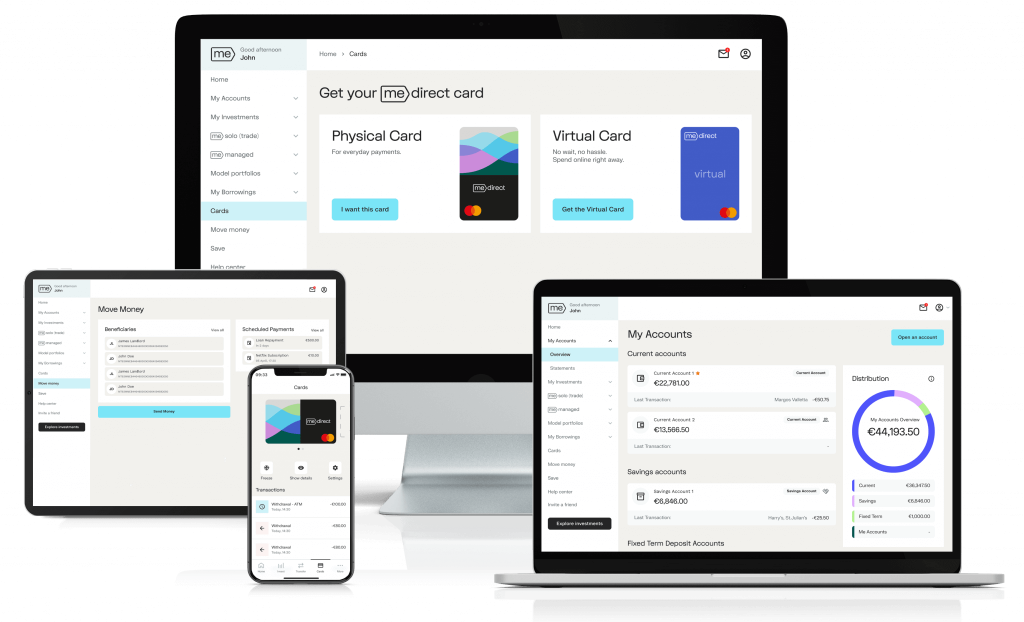In the past we discussed what mutual funds are.
Today we will explain the function and role of the fund managers, who
invest money on behalf of their clients – including pension funds, institutional investors, retail investors, insurance companies and others – with a view
to making it grow over the long term.
Fund managers (also known as asset managers) broadly fall into two camps: “active” fund managers and “passive” fund managers.
“Active” fund managers use their skills and knowledge to build portfolios that can beat the market average and often take bigger risks for better rewards. This is known
as “generating alpha”, i.e excess return over a market index used as a benchmark.
By comparison, “passive” management, or index tracking, involves selecting a portfolio
of assets whose change in value will match that in a financial index – such as the UK’s FTSE 100, Eurostoxx 50 in the Eurozone, the
Dow Jones Industrial Average in the US and Hong Kong’s Hang Seng Index. Simply creating returns that match the market is known as “generating beta”.
However, within these two categories, the array of fund management styles is huge. For example, two contrasting styles are “bottom up” investing – where a fund manager
focuses on analysing individual stocks or securities –
and “top down” investing, which relies on analysis of “big picture” trends in the economy, financial sector or individual industries. Some fund managers also
focus on investing in fixed income products, while others prefer equities,
and portfolio managers often have a particular country expertise, whether that’s the UK, US or emerging markets.
The way a fund manager operates has a huge bearing on just how the fund will perform over time. A quality fund manager can make or break your investment. So,
what exactly does a fund manager do?
For actively managed mutual funds, the fund manager is basically in charge of what stocks, bonds or other assets the fund will
buy with investors’ money. Essentially, the fund manager will function as a stock-picker. Focusing on price-to-earnings
ratios (which shows the relationship between a stock price and its company’s earnings (or profits) per share of stock), price momentum, sales, earnings, dividends and
other various metrics, the fund manager will build a portfolio of assets to
accomplish the aims of the mutual fund. Those aims (growth, value, income etc.) are spelled out within the mutual fund’s prospectus. While fund managers do have some
leeway, these objectives help the managers hone in on certain sectors or styles
pertinent to the individual mutual fund. In addition, the manager will evaluate risks—both single stock and macro-economic—versus potential returns. On a daily basis,
the fund manager will often be in charge of actually placing orders
and buying/selling individual stocks/bonds from the portfolio. For large mutual funds, the lead fund manager is often supported by a staff of analysts, traders and
other people who monitor the markets, make trades and perform other duties at the fund.
This support staff is critical in making sure the fund operates in an efficient and profitable manner. However, it is the lead mutual fund manager’s job to guide the overall direction of the portfolio. Ultimately, he or she is calling the shots
on just what it will own and when.
Sometimes, mutual funds are managed by a committee process. Here, lead fund managers will bounce ideas off each other and stocks are selected through a voting process.
Another common approach is a multi-manager fund. Here, each management team is given
a percentage of the fund’s assets to guide and are only responsible for those funds. A single lead manager will decide on who will be responsible for what
and how much of the fund’s assets each management team is given to manage.
Figuring out just how effective a fund manager is comes down to performance relative to their target benchmark. Each fund looks to target a certain index as the guide for
investment. For example, a large-cap blended stock fund may look towards the venerable
S&P 500, while a broad-based bond fund will use an Aggregate Bond Index. The general idea for a fund manager is to “beat” the performance of that index in a given year.
The extra return is how actively managed mutual funds justify their
expenses.
This is done through what is called “style-drift.” Basically, it’s how much play the mutual fund manager has with regards to changing the weighting in its target benchmark.
He or she may go over- or under-weight in certain sectors (like
adding more technology or reducing energy, for example) versus their benchmark index to gain additional returns. The fund’s prospectus will outline exactly the maximum and
minimum amount a fund manager can stray.
Ratings services such as Mediterranean Bank’s partner, Morningstar help individual investors by taking all the funds in certain categories (large-cap growth, developed market
international, etc) and comparing them to each other. Morningstar will
apply a star-rating system to the funds. For each fund with at least a three-year history, Morningstar calculates a Morningstar Rating based on a Morningstar
Risk-Adjusted Return measure that accounts for variation in a fund’s monthly performance
(including the effects of sales charges, loads, and redemption fees), placing more emphasis on downward variations and rewarding consistent performance.
The Funds Navigator allows you to
find the best funds to fit your investment needs by applying one or more criteria to select them. You can search funds by asset class, fund provider,
Morningstar Rating, and other criteria. You can sort funds by currency, performance, risk profile and other indicators. You can also click
on each fund to find out detailed information about the fund’s investments and download the fund’s
documents to make a more informed investment decision.
Il-Fund Managers – X’inhu xogħolhom?
Fil-ġimgħat li għaddew iddiskutejna x’inhuma mutual funds.
Illum se nispjegaw il-funzjoni u r-rwol tal-Fund Managers – jiġifieri, dawk li jinvestu f’isem il-klijenti u jimmaniġġjaw il-fondi. Dawn jistgħu jkunu investituri
istituzzjonali, kumpaniji tal-assigurazzjoni, pension funds u oħrajn. L-għan tagħhom huwa dejjem li jkabbru l-investiment tal-klijenti
tagħhom fuq perjodu twil.
Il-Fund Managers (magħrufa wkoll bħala managers tal-assi – asset managers) jaqgħu taħt żewġ kategoriji: “attivi” u “passivi”.
Il-managers “attivi” jużaw il-ħiliet u l-għarfien tagħhom biex jibnu portafolli li bih jistgħu jegħlbu r-rata medja tas-suq u, ġeneralment, jieħdu aktar riskji
biex jiksbu aktar dħul. Dan huwa magħruf bħala “generating alpha”, li jfisser
li ddaħħal dħul akbar mill-indiċi li tkun użajt bhala l-punt ta’ referenza jew aħjar il-benchmark tiegħek.
L-immanniġġjar “passiv”, jew l-index tracking, jinvolvi għażla ta’ portafolli ta’ assi li l-bidla fil-valur tagħhom tkun taqbel mal-indiċi finanzjarji – ngħidu aħna
l-FTSE 100 tal-Ingilterra, il-Eurostoxx 50 fiż-żona ewro, id-Dow
Jones Industrial Average fl-Istati Uniti, u l-Hang Seng f’Hong Kong. Dan il-metodu, li tqabbel id-dħul mas-suq, hu magħruf bħala “generating beta”.
Tajjeb ngħidu li dawn iż-żewġ kategoriji jinkludu għażla kbira ta’ stili ta’ mmaniġġjar. Pereżempju, żewġ stili kuntrastanti huma l-investiment imsejjaħ bottom up – li
fih il-fund manager jiffoka billi janalizza stokks
jew ishma individwali, u dak top down – li jistrieħ fuq l-analiżi tax-xejriet fl-ekonomija, fis-settur finanzjarju jew f’industriji partikolari.
Uħud mill-fund managers jiffukaw ukoll fuq l-investiment ta’ prodotti
bi dħul fiss bħal bonds, filwaqt li oħrajn jippreferu l-ishma. Dawn il-managers tal-assi ħafna drabi jkunu esperti f’pajjiż partikolari,
bħar-Renju Unit, l-Istati Uniti jew is-swieq emerġenti.
Il-mod li bih jaħdem fund manager għandu impatt qawwi fuq kif jopera l-fond maż-żmien. Manager jista’ jibnilek jew, sfortunatament, iwaqqagħlek
l-investiment tiegħek. Allura, x’inhu eżattament ir-rwol tal-fund manager?
Fil-każ tal-managed mutual funds attivi, il-manager bażikament jieħu ħsieb liema stokks jew ishma, bonds jew assi oħra jista’ jixtri l-fond bi flus l-investituri.
Ikollu r-rwol ta’ stock-picker, jiġifieri dak li jagħżel
l-istokks jew l-ishma. Dan jiffoka fuq ħafna fatturi fosthom il-price-to-earnings ratios (kalkolu li juri r-relazzjoni bejn il-prezz tal-ishma u l-profitti
tal-kumpanija għal kull sehem), il-momentum tal-prezz, il-bejgħ, id-dħul,
id-dividends u oħrajn biex jibni portafoll ta’ assi li jilħqu l-għanijiet tal-mutual fund. Dawk l-għanijiet (bħat-tkabbir, il-valur, u d-dħul, fost l-oħrajn)
jiġu indikati fil-prospett tal-mutual fund.
Minkejja li l-managers tal-assi għandhom ċertu flessibbiltà, dawn l-għanijiet tal-fund jgħinuhom jiffokaw fuq ċerti setturi jew stili relatati ma’ dak
il-mutual fund partikolari. Barra minn hekk, il-manager jevalwa
r-riskji – kemm fuq ishma individwali kif ukoll dawk makroekonomiċi, u jqabbilhom mad-dħul potenzjali. Ħafna drabi, ta’ kuljum, il-fund manager jieħu ħsieb
jagħmel l-ordnijiet u jixtri jew ibigħ stokks u bonds individwali mill-portafoll.
Fil-każ ta’ mutual funds kbar, il-manager ewlieni tal-assi jista’ jkun megħjun minn tim ta’ analisti, negozjaturi u nies oħrajn li jissorveljaw is-swieq,
jagħmlu l-kambju u jwettqu dmirijiet oħra relatati mal-fond. Dan
it-tim ta’ nies hu importanti ħafna biex il-fond jopera b’mod effiċjenti u bi profitt. Imma tajjeb ngħidu li, fl-aħħar mill-aħħar, huwa dejjem ix-xogħol tal-mutual
fund manager ewlieni li jiggwida d-direzzjoni tal-portafoll. Hu
dan il-manager li jieħu d-deċiżjonijiet fiex isir l-investiment u meta.
Barra minn hekk, xi drabi l-mutual funds jiġu mmaniġġjati minn kumitat apposta. Hawn il-managers tal-assi ewlenin jaqsmu l-ideat tagħhom ma’ xulxin u l-investimenti
jintgħażlu b’vot. Metodu komuni ieħor hu dak tal-multi-manager fund.
Hawnhekk, kull tim ta’ managers jingħata perċentwal mill-assi tal-fond u jkunu responsabbli għal dik il-porzjon tal-fund biss. Id-deċiżjonijiet fuq min se
jkun responsabbli u kemm hu kbir il-porzjon mill-assi tal-fund li
jkollhom taħt il-kontroll tagħhom jeħodhom dak li hu magħruf is-single lead manager.
Manager tal-assi tkun taf huwiex tajjeb jew le mir-riżultati li jġib meta mqabbel ma’ dak li huwa magħruf bhala it-target benchmark. Kull fond ikollu fil-mira
tiegħu indiċi partikolari bħala gwida għall-investiment. Pereżempju, large-cap blended stock fund jista’ jħares lejn l-S&P 500, filwaqt li broad-based
fund juża Indiċi tal-Aggregate Bond. Kull manager tal-assi jistinka biex jaqbeż il-mira tal-indiċi f’sena partikolari. Id-dħul żejjed allura nistgħu
nattribwuh
ma’ kemm l-immaniġġjar attiv tal-fund ikun sar tajjeb.
Dan isir permezz ta’ “style-drift”. Bażikament dan iħoll u jorbot mill-flessibbiltà li jingħata l-manager tal-assi fir-rigward tat-tibdil li jista’ jagħmel
fil-fund, skont il-benchmark tiegħu.
Dan jista’ jżid jew inaqqas f’investimenti f’ċerti setturi (pereżempju jżid fit-teknoloġija u jnaqqas fl-enerġija) kontra l-benchmark jew l-indiċi
biex ikun jista’ jikseb aktar dħul. Il-prospett tal-fond jindika eżattament
l-ammont massimu u minimu li l-manager jista’ jmexxi assi fihom.
Is-servizzi ta’ ratings, bħal dawk ta’ Morningstar, l-imsieħeb ta’ Mediterranean Bank, jgħinu lill-investituri individwali billi jieħdu l-fondi kollha f’ċerti
kategoriji (per eżempju kumpaniji kbar magħrufa bħala large-cap eċċ.) u jqabbluhom flimkien. Morningstar japplikaw sistema ta’ star-rating
għall-funds. Kull fund li ilu jeżisti mill-inqas tliet snin, Morningstar jikkalkulaw ir-rating tiegħu, li jkun ibbażat fuq id-dħul
tal-fund jew aħjar ir-Risk-Adjusted Return li jammonta għal varjazzjoni fir-rendiment ta’ kull xahar tal-fund (inklużi l- effetti tat-tariffi
jew sales charges tal-fund, il-loading u spejjeż oħra inklużi
redemption fees). Din ir-rating tagħmel aktar enfasi fuq il-varjazzjonijiet negattivi u l-konsistenza fil-prestazzjoni tal-fund.
Il-Funds Navigator jgħinek issib l-aħjar funds
skont xi tkun qed tfittex. Fil-filtru hemm ħafna kriterji li tista’ tuża sakemm issib dak li trid. Tista’ tfittex skont il-klassi tal-assi, skont il-kumpanija ta’ min
hu il-fund, skont il-klassifikazzjoni jew aħjar ir-rating ta’ Morningstar, u kriterji oħra. Tista’ tfittex funds ukoll skont il-munita, skont
il-prestazzjoni tagħhom u indikaturi oħra. Tista’ tmur fuq
kull fund biex issib l-informazzjoni dettaljata dwar fejn ikun qed jinvesti l-fund u anke tista’ tniżżel id-dokumenti tal-fund biex tkun tista’
tagħmel deċiżjoni aktar informata qabel ma tinvesti.





